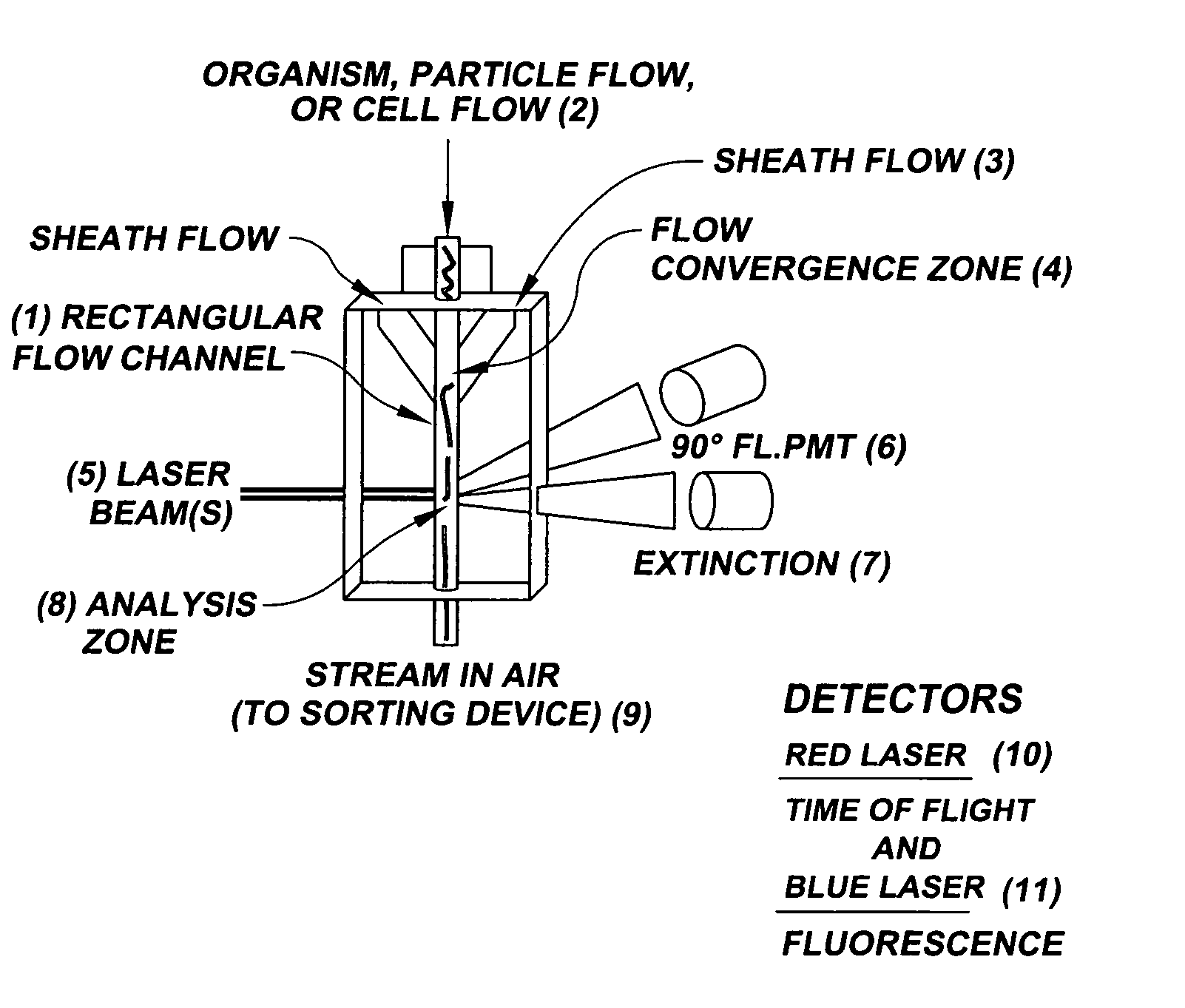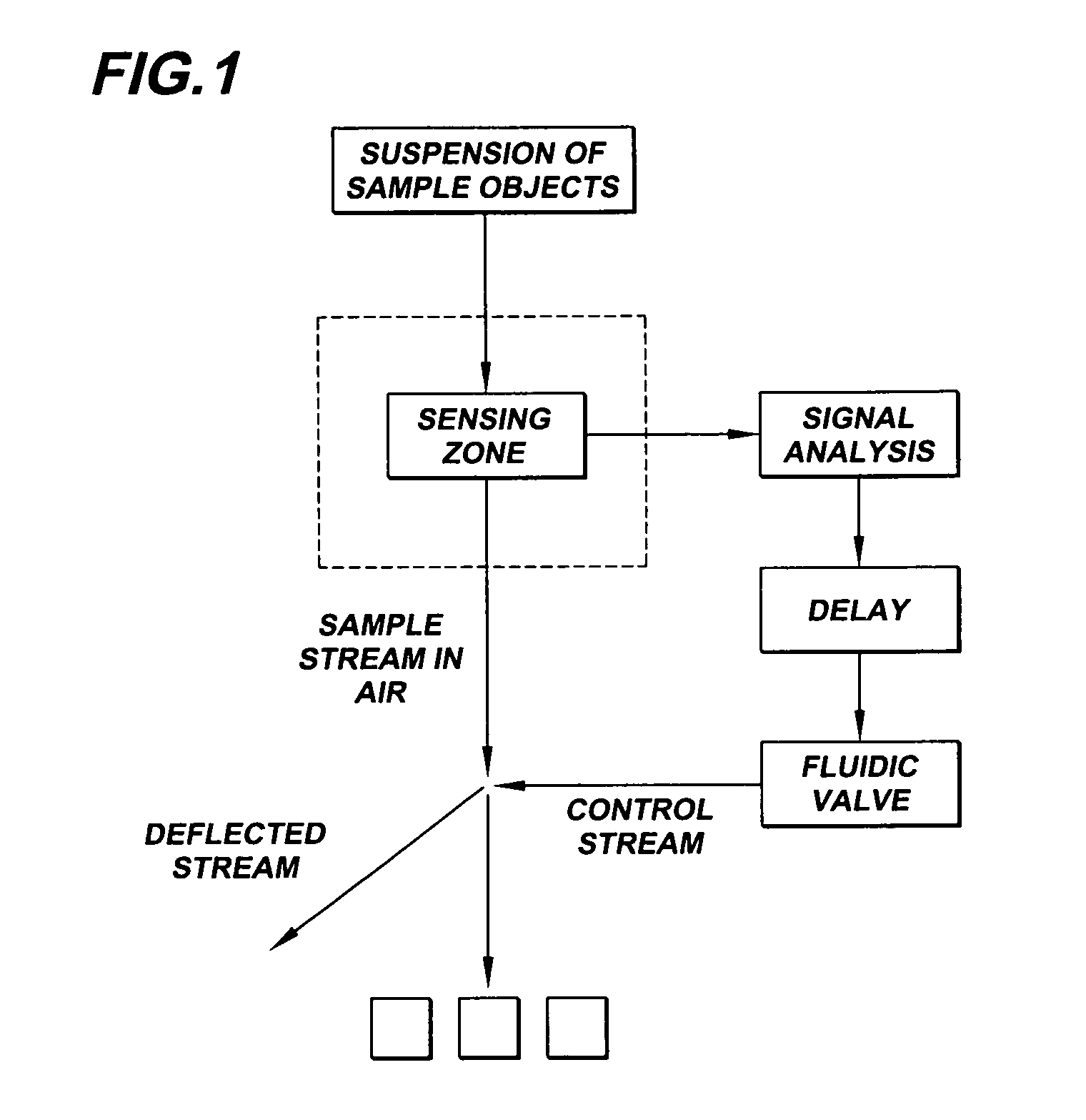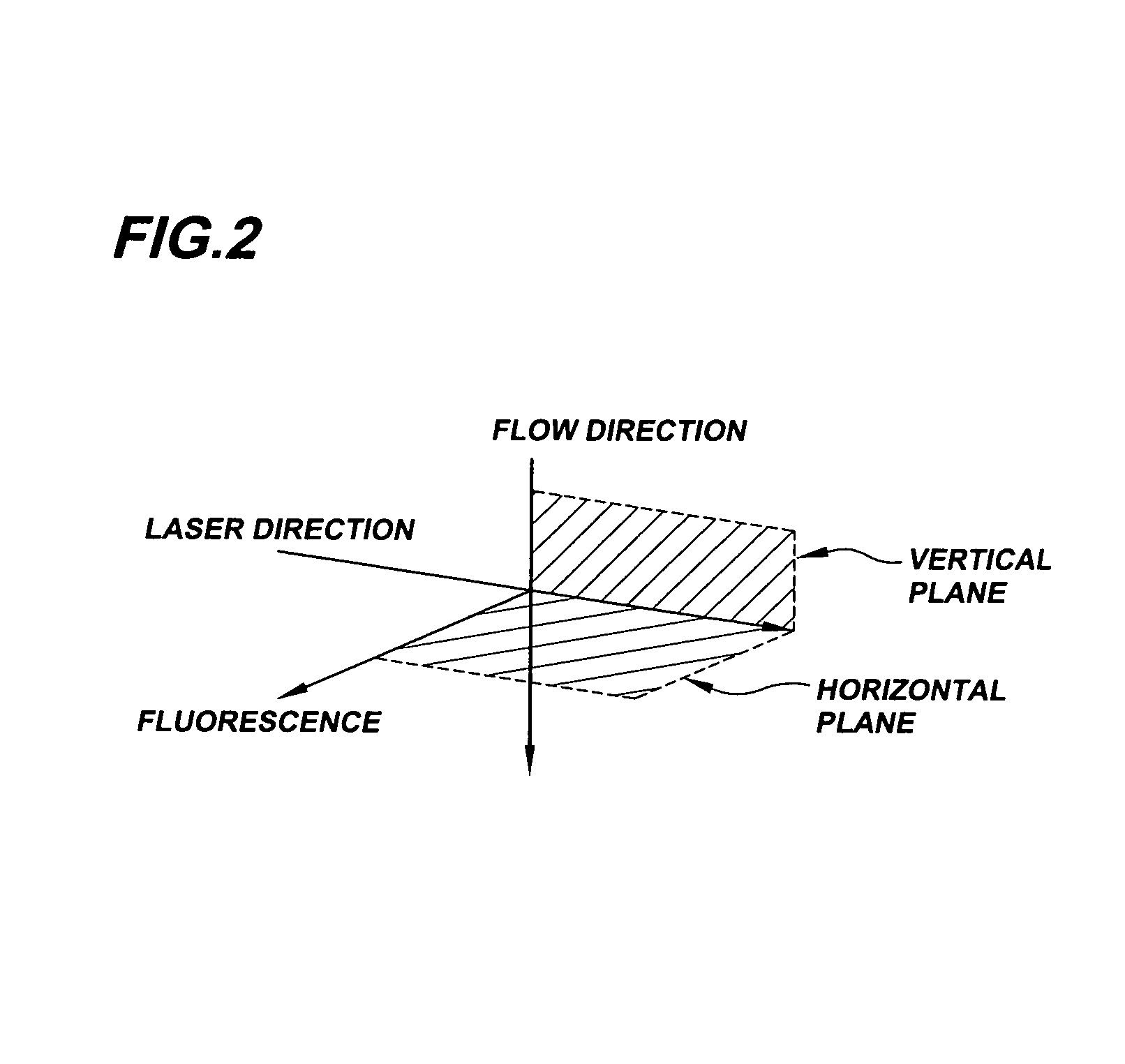System for axial pattern analysis of multicellular organisms
a multicellular organism and axial pattern technology, applied in the field of automatic analysis of complex multicellular model organisms, can solve the problems of inability to accurately assess the effect of one or more compounds on the development or physiology of multicellular organisms, inability to achieve high-speed, high-throughput drug discovery, and inability to achieve high-throughput drug discovery
- Summary
- Abstract
- Description
- Claims
- Application Information
AI Technical Summary
Benefits of technology
Problems solved by technology
Method used
Image
Examples
example 1
Simultaneous NACLS and Fluorescence From C. elegans
[0103]A light scatter sensor was placed at various angular positions with respect to the optical axis in the forward scatter direction. The collection cone angle was approximately six degrees (NACLS). A photomultiplier with a 20×-collection lens and a barrier filter optimized for fluorescence from GFP was used on the fluorescence detector. The C. elegans that were used for this illustration expressed GFP at two locations in the “head” and nowhere else. The oscilloscope traces for light scatter and fluorescence are shown in FIGS. 4 and 5.
[0104]The traces show the passage of the organism through the line focus laser beam. The lower trace (1) is the light scatter signal and the top trace (2) is the fluorescence signal. The x-axis is time. FIG. 4 is typical of a class of light scatter traces observed with a NACLS detector. The detector was placed at a 45 degree forward light scatter angle directly below the laser beam axis (below the h...
example 2
Problems Associated with Optical Extinction Signals as Trigger and Timing Signals
[0106]FIG. 6 illustrates another problem associated with improper placement of a light scatter detector for triggering. In this case a sensor was place directly on axis and in the laser beam. The object was to measure light blockage (extinction) by the organisms. Light extinction is a possible alternative to the preferred WACLS (light scatter) trigger of the present invention. The test C. elegans had a single weak region of fluorescence at a neuronal location in the head located slightly posterior to the tip of the “nose.” A 40×objective was used to collect more light since this organism was very weakly fluorescent. The extinction sensor collected light over a two degree cone. In this case, the extinction trace returns to baseline during the passage of the nematode, and even becomes slightly negative. Therefore, this signal could not be used as a trigger or timing signal.
example 3
Simultaneous WACLS and Fluorescence from C. elegans
[0107]A photodetector was placed on the optic axis with a collection cone angle of approximately 30 degrees (WACLS). A mask was placed over the center front of the detector to block any directly transmitted light or stray scattered light from the flow cell capillary. This way, the detector collected light scatter from the organisms over a several times wider cone angle than in the previous examples. The photomultiplier with a 40×collection lens and a barrier filter for green fluorescence protein was used to detect fluorescence since the fluorescence signal was very weak.
[0108]FIG. 7 shows a WACLS signal on the lower trace and the associated fluorescence signal on the upper trace. Note that the WACLS signal begins and ends at the proper time and does not return to baseline during the passage of the nematode. This was a consistent and systematic observation so long as the acceptance angle was sufficiently wide and light from the illu...
PUM
| Property | Measurement | Unit |
|---|---|---|
| Time | aaaaa | aaaaa |
| Angle | aaaaa | aaaaa |
| Angle | aaaaa | aaaaa |
Abstract
Description
Claims
Application Information
 Login to View More
Login to View More - R&D
- Intellectual Property
- Life Sciences
- Materials
- Tech Scout
- Unparalleled Data Quality
- Higher Quality Content
- 60% Fewer Hallucinations
Browse by: Latest US Patents, China's latest patents, Technical Efficacy Thesaurus, Application Domain, Technology Topic, Popular Technical Reports.
© 2025 PatSnap. All rights reserved.Legal|Privacy policy|Modern Slavery Act Transparency Statement|Sitemap|About US| Contact US: help@patsnap.com



